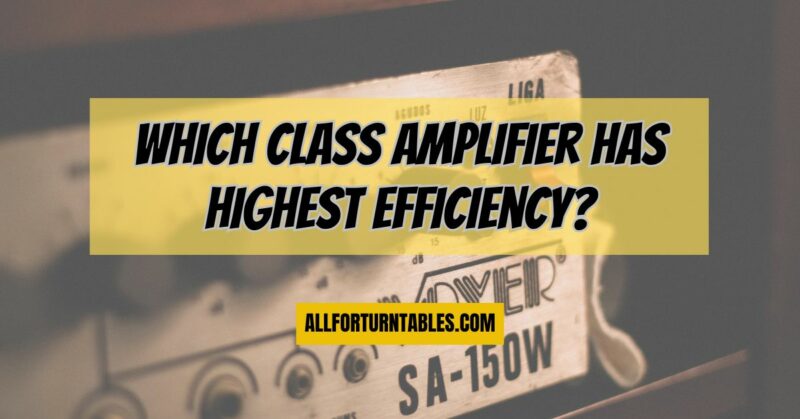When it comes to amplifiers, efficiency matters. It affects how much power an amplifier can deliver while minimizing wasted energy as heat. So, which class of amplifier reigns supreme in the efficiency department? In this beginner-friendly guide, designed for those aged 18-38, we’ll unravel the world of amplifier classes, explain why Class C and Class B amplifiers are highly efficient, explore which class is best for your needs, and investigate the maximum efficiency of Class E amplifiers.
Why Is Class C Amplifier Highly Efficient?
Class C amplifiers are renowned for their high efficiency, and here’s why:
- Non-Linear Operation: Class C amplifiers operate in a non-linear mode, which means they conduct current only during a portion of the input signal cycle. This non-linear operation results in reduced power dissipation and increased efficiency.
- High Conductivity: They have a high level of conductivity, which means they spend most of the time in the “on” state, allowing maximum power transfer to the load.
- Ideal for High-Frequency Signals: Class C amplifiers are commonly used in high-frequency applications, such as RF (radio frequency) transmitters, where efficiency is crucial.
Why Is Class B Amplifier More Efficient?
Class B amplifiers are known for their efficiency, particularly in linear audio applications. Here’s why they are more efficient:
- Complementary Operation: Class B amplifiers use a pair of transistors, one for the positive half of the waveform and one for the negative half. This complementary operation minimizes power loss.
- Crossover Distortion Reduction: Although Class B amplifiers have some crossover distortion when the signal transitions from one transistor to the other, modern designs incorporate techniques to minimize this distortion, improving overall efficiency.
Which Class Amplifier Is Best?
The choice of the best amplifier class depends on your specific needs:
- Class A Amplifiers: Best for audiophiles who prioritize sound quality over efficiency. They have low efficiency but offer excellent sound fidelity.
- Class AB Amplifiers: A balance between sound quality and efficiency. They are versatile and suitable for a wide range of applications.
- Class D Amplifiers: Ideal for applications where high efficiency is crucial, such as portable devices, car audio systems, and certain professional audio setups. They are known for their compact size and minimal heat generation.
- Class E Amplifiers: Often used in RF and wireless communication systems, Class E amplifiers can achieve very high efficiency, sometimes exceeding 90%, making them ideal for battery-powered devices.
What Is the Maximum Efficiency of Class E Amplifier?
Class E amplifiers can achieve maximum theoretical efficiency of up to 100%, although achieving this level of efficiency in practice is challenging. In real-world applications, Class E amplifiers often achieve efficiency levels in the high 80% to low 90% range, which is still remarkably efficient.
In conclusion, amplifier efficiency is a crucial factor when choosing the right amplifier for your needs. Class C amplifiers are highly efficient for high-frequency applications, while Class B amplifiers excel in linear audio applications. The “best” amplifier class depends on your priorities, with Class D and Class E amplifiers being top choices for applications where efficiency is paramount. Class E amplifiers, in particular, can reach very high efficiency levels, although achieving the theoretical maximum efficiency of 100% in practice is challenging. Ultimately, the right amplifier class for you depends on your specific application and performance requirements.


